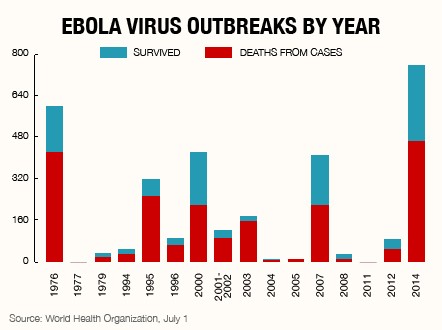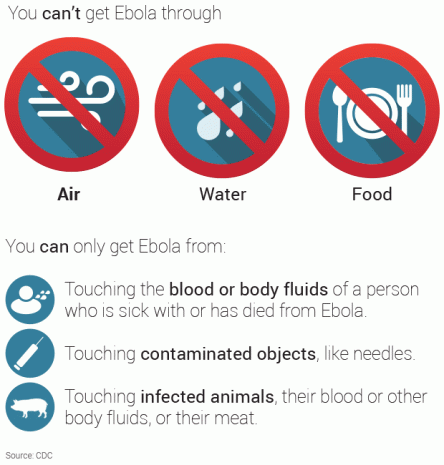The talk of the town- and by town, I mean world- is Ebola. Everyone knows something about Ebola. For better or for worse, the media has seen a huge influx in reporting on this disease. From televised news reports to newspaper articles to twitter hashtags, you don’t have to look far for someone talking about Ebola. But, how do you know what is correct? Sources have been giving conflicting reports since the pandemonium began. How did this happen so suddenly? How many people have actually died? Where is the disease? How does it spread? How do we stop it? Let’s clear a few things up…
First of all, Ebola is not something new. This disease has been around for several decades now, first showing up in simultaneous but isolated cases in the Sudan and the Democratic Republic of the Congo in 1976. The general public, however, was first acquainted with Ebola earlier this year, on August 8th when the World Health Organization (WHO) Director-General declared this outbreak a Public Health Emergency of International Concern.
According to the WHO, between time of first outbreak in 1976 and 2012, 1,590 people have died from Ebola, none being in the United States. The good news though, is there have been 2,387 individual cases, but only 1,590 of those cases were fatal. Ebola is not 100% fatal. The mortality rate is 70%.
Presently, which people are most interested in, how many people have died here, in the United States from Ebola? One. There are conflicting reports adding to the hysteria, but as of today, October 15th 2014, only one person has died. Newly infected people and cases of possible contamination are surfacing daily. Here’s the headline from just a few hours ago: http://www.cnn.com/2014/10/15/health/texas-ebola-outbreak/index.html
Panic is spreading rapidly and people are now terrified of catching Ebola. But, you’re risk probably isn’t as high as you think. The following countries have been affected by Ebola in some way: Guinea, Sierra Leone, Liberia, Nigeria, Senegal, Spain, the United States, and Democratic Republic of the Congo. Furthermore, the only state in the US at high risk is Texas.
The most pressing concern for most people has become how Ebola is passed. So here is a little graphic to set everyone straight:
Got it? Good.
So now, it’s just a matter of getting ahead of Ebola. How do we stop it? How do we get a handle on this international infection? An innumerable amount of people are working tirelessly towards this end: The Center for Disease Control, WHO, UNICEF, Doctors without Borders, and local healthcare professionals, just to name a few. It’s not being ignored. It’s not just happening. It’s also not a quick fix. It’s going to take time, education, serious study and research before a stop to the spread and ultimately a cure can be found.
So, don’t be afraid of the big bad Ebola. Yes, it’s extremely serious and hazardous, but the more you know, the better off you are.


